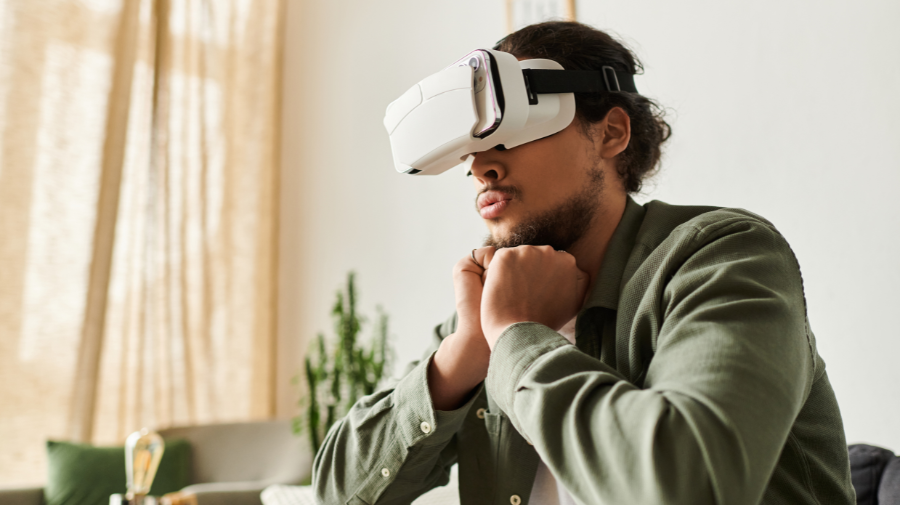Beyond steps: The role of wearables in clinical assessment

Your smartwatch or fitness tracker is great for counting steps and monitoring workouts. But what if it could also detect early signs of depression or anxiety? Wearable technology is rapidly evolving from a wellness gadget into a sophisticated clinical tool, offering powerful new ways to monitor and understand our mental health.
These devices are becoming capable of capturing continuous, real-world data about our bodies and behaviors. This information provides a much clearer picture of our well-being than a once-a-year checkup ever could. Let’s explore how these tiny sensors are making a big impact on mental healthcare.
The tech behind the trend
The magic of modern wearables lies in their advanced sensors and smart algorithms. While early fitness trackers were simple, today’s devices are packed with technology capable of gathering detailed physiological data 24/7.
Most people in America (91%) own a smartphone, many of which include health tracking capabilities. 21% own and use a smartwatch or wearable of some kind, and that number is projected to rise in the next five years. However, wearables aren’t as common as smartphones yet. There’s also the challenge of how often people wear them. Some wear them only during the day, during workouts, or forget to wear them entirely.
From simple sensors to advanced biometrics
The green light flashing on the back of your watch is likely a photoplethysmography (PPG) sensor. It measures changes in blood volume to calculate your heart rate and heart rate variability (HRV), which are key indicators of stress. While largely effective, PPG technology can also be affected by things like skin pigmentation and movement.
The next generation of sensors is even more impressive. Researchers are developing ultra-sensitive magnetic sensors and flexible, skin-conformal patches. These can measure everything from your heart’s magnetic field to subtle electrical changes on your skin (electrodermal activity), providing a more accurate and complete view of your body’s stress response. This technology works better across diverse populations and uses less power, allowing for longer, uninterrupted monitoring.
The power of wearables lies in passive data, as it removes the bias and effort of self-reporting. Active data means the user has to input information (like mood logging), while passive data is collected automatically (like your heart rate). Wearables can be less intrusive than dedicated medical devices, cheaper, and provide more accurate data since they collect information from real life situations. Providers get better information, while clients don’t have to work as much to collect accurate health data.
AI that understands you
Collecting data is only half the battle. The real breakthrough comes from artificial intelligence (AI) algorithms that can analyze these continuous data streams. These AI models are trained to recognize patterns that correlate with mental health conditions like anxiety and depression.
For example, an algorithm might learn that a combination of decreased sleep quality, elevated resting heart rate, and reduced physical activity over several days is a strong predictor of a depressive episode. By fusing data from multiple sensors, including motion, skin temperature, and heart activity, these systems can provide insights that were previously impossible to obtain outside of a clinical lab.
It could also help providers understand symptoms that clients can’t name, or even indicate something is wrong even if a client hasn’t noticed. For example, a client may think they’re fatigued because of poor sleep, but data from a wearable could indicate health issues that impact their energy levels even if they sleep well. That data could help individuals get to the right provider sooner. Professor Chenyang Lu even suggests that the combination of AI and wearables could act as an automated screening tool, letting people know they need mental health care more proactively.
Wearables in clinical practice
The transition from fitness tracking to clinical assessment is already underway. Studies demonstrate the potential of wearables across several key areas of mental health.
Wearables could detect symptoms of mental health conditions
Studies have shown that data from popular consumer wearables can help predict depression. They could also help detect anxiety, though they could not differentiate between different types (such as OCD or PTSD). There are also studies that suggest wearables could be used to monitor schizophrenic clients and predict worsening symptoms, or even the onset of a psychotic episode. By analyzing subtle changes in sleep, activity levels, and heart rate, these devices can flag potential issues long before a person might recognize the symptoms themselves. This early detection is crucial for timely intervention, as Michelle Newman, PhD, points out in this APA article.
Wearables could support ongoing treatment
Wearables also empower clients and therapists to manage existing conditions more effectively. Clients could use apps connected to their wearables to track their mood, symptoms, and medication adherence. This data can then be shared with their primary care providers, leading to more personalized care.
In addition, studies show that when clients or patients “take ownership” of their treatment through active involvement and shared decision-making, they experience better adherence, higher satisfaction, and superior clinical outcomes. Allowing them to access this data and see results could prevent premature dropout.
Imagine being able to see objective data on a patient’s sleep patterns and stress levels between sessions. This information can help guide therapy, adjust treatment plans, and provide support exactly when it’s needed most.
But wearables aren’t ready for therapy (at least not yet)
Despite the potential, there are hurdles to overcome before wearables become a standard part of mental healthcare.
Real-world reliability remains a problem. Many studies are conducted in controlled lab settings. The real world is messy, and factors like a bumpy bus ride, pregnancy, medication, or an intense workout can interfere with sensor readings. Ensuring data accuracy “in the wild” is a top priority. In the same APA article we mentioned earlier, David Mohr, PhD, points out that we need larger, more diverse studies before the data can be fully trusted.
Studies warn that while the data can be useful for trained clinicians, it becomes less effective if not paired with other tools and questionnaires. With the rise of mental health apps, it’s more important than ever to ensure this data is used responsibly. Just like WebMD can make a simple cold seem alarming, there’s a risk that people might misinterpret the data and self-diagnose serious mental health conditions based on misleading information.
Data privacy and security are another big concern. Health data is extremely sensitive. We need robust systems to ensure that personal information is protected and used ethically. Most wearables available now are commercial products that often harvest and sell data with little oversight. For therapists, this also means handling more health data that must be securely collected, stored, and protected.
For a wearable to be used as a medical device, it needs to meet strict regulatory standards from bodies like the FDA. Furthermore, the data needs to integrate seamlessly into existing electronic health records (EHRs) so doctors and therapists can easily access and use it.
Frequent health notifications can be overwhelming. Clinicians and developers should create systems that deliver helpful alerts without stressing clients or overworking providers. Health changes often take time to appear, so constant monitoring isn’t always useful. It can even lead to stress or over-management. Therapists need to decide which health data requires continuous tracking and which can be checked periodically, and they’ll have to educate their clients.
There’s also the concern of accessibility. Not everyone can afford a smartwatch. If wearables become a key diagnostic tool, could this create a two-tiered system of healthcare where those with financial means get better, earlier diagnoses? This is a critical ethical consideration.
Wearables could make care more personalized
The future of mental healthcare is moving from a reactive model to a proactive and personalized one. By providing a continuous, objective window into our physiological and behavioral health, wearables devices could help us catch problems earlier, manage conditions more effectively, and build a healthcare system that is truly centered around the individual.
The journey from fitness tracker to clinical tool is well underway. As sensor technology improves, AI becomes more sophisticated, and data integration becomes smoother, your client’s watch could do more than just count their steps.






